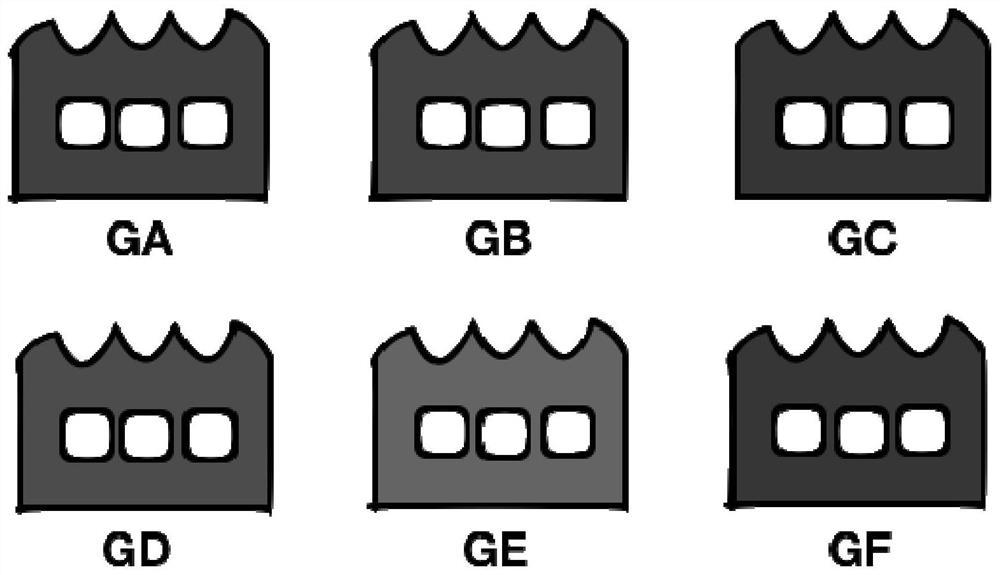Method for integrated 3D printing of polyether-ether-ketone oral restorations with different colors
An oral restoration and 3D printing technology, applied in the field of oral restorations, can solve problems such as cumbersome processing procedures, low hardness of resin materials, and limited clinical indications, and achieve the goal of improving connection stability, ensuring stability, and improving roughness Effect
- Summary
- Abstract
- Description
- Claims
- Application Information
AI Technical Summary
Problems solved by technology
Method used
Image
Examples
Embodiment 1
[0025] This embodiment discloses an integrated 3D printing method of polyether ether ketone dental restorations in different colors, which includes the following steps:
[0026] S1: Use a digital oral scanner to scan the surface morphology of the patient's upper and lower jaws, obtain digital three-dimensional model data of the patient's upper and lower jaws, and obtain the occlusal relationship between the upper and lower dentitions;
[0027] S2: Import the acquired three-dimensional data into the digital denture design software, and use the three-dimensional data as the basis to design different parts of the digital dental prosthesis and adjust the overall occlusal relationship to obtain a three-dimensional data model of the dental prosthesis;
[0028] S3: Separate the three-dimensional data model of the teeth and gingival parts of the dental restoration, and design the connection interface to obtain the printing data of the teeth and gingival parts, and then import the printing dat...
Embodiment 2
[0042] The teeth and gums of the oral restoration involved in this embodiment are both made of polyether ether ketone restoration materials; wherein the polyether ether ketone tooth color material includes polyether ether ketone and toner powder. The powder is one of titanium oxide, zirconium oxide, and aluminum oxide, and the mass percentage of the toner powder is 2%-20%; the polyetheretherketone gum color material includes the following components: polyetheretherketone, iron oxide, The mass percentage of iron oxide is 0.2%-1.2%.
[0043] This embodiment relates to a polyetheretherketone dental restoration tooth color shader and a gum color shader;
[0044] Among them, the polyether ether ketone dental restoration tooth color palette includes nine color standard plates from Dentin-A to Dentin-I. Among them, the DA color standard plate is mixed with polyether ether ketone and 3% titanium oxide by mass. The DB color standard plate is made of polyether ether ketone and 10% by mass o...
PUM
 Login to View More
Login to View More Abstract
Description
Claims
Application Information
 Login to View More
Login to View More - R&D
- Intellectual Property
- Life Sciences
- Materials
- Tech Scout
- Unparalleled Data Quality
- Higher Quality Content
- 60% Fewer Hallucinations
Browse by: Latest US Patents, China's latest patents, Technical Efficacy Thesaurus, Application Domain, Technology Topic, Popular Technical Reports.
© 2025 PatSnap. All rights reserved.Legal|Privacy policy|Modern Slavery Act Transparency Statement|Sitemap|About US| Contact US: help@patsnap.com


